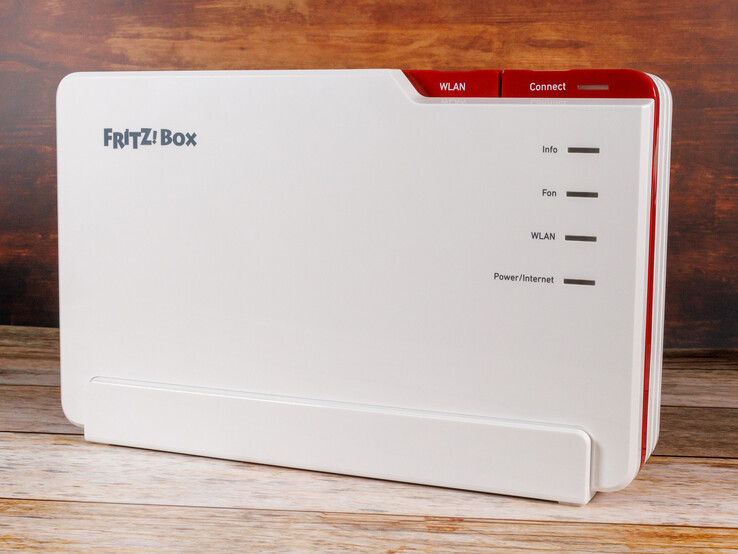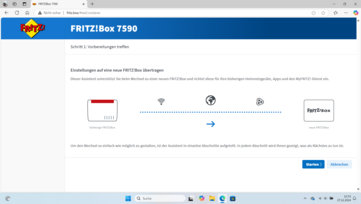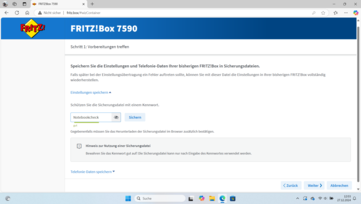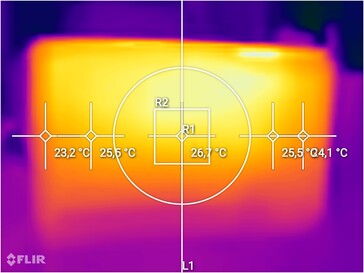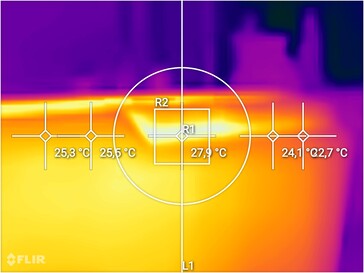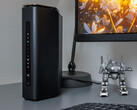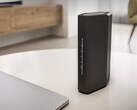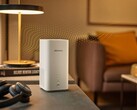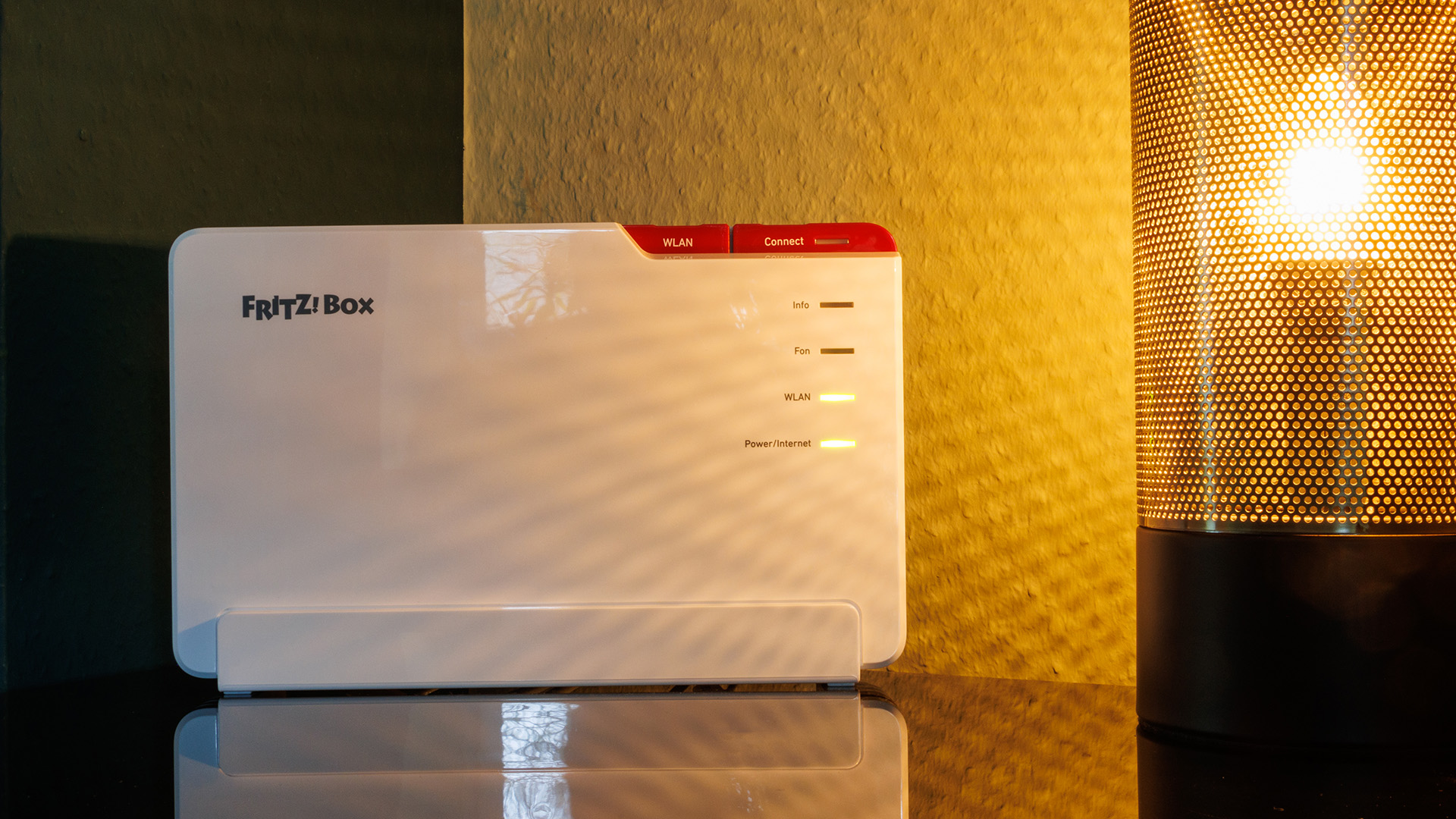
AVM Fritz!Box 5690 Pro review – the Swiss Army knife of routers with only a few rough edges
All in one.
AVM is the leading name in routers across the DACH region. The Fritz!Box 5690 Pro has been on the market since last summer and is packed with features – including Wi-Fi 7 with tri-band technology. Our review explores what it lacks – and why it still earns the title of the router of 2025.Daniel Schmidt, 👁 Enrico Frahn, ✓ Louise Burke (translated by DeepL / Ninh Duy) Published 🇩🇪 🇫🇷 ...
Verdict – no speed king but a true all-rounder
The Fritz!Box 5690 Pro is probably the most versatile router currently available on the market. In addition to two modems (fiber optic and DSL), it can handle tri-band WLAN with 6 GHz and Wi-Fi 7. AVM has also provided an integrated DECT base station and it is still possible to connect analogue telephony devices to the Fritz! Five calls can now be made simultaneously via the integrated telephone system.
The icing on the cake is an integrated smart home platform that not only allows you to control your own Fritz products but also products from other manufacturers that use ZigBee or DECT ULE. So if you want, you can sort out one or the other base station.
Although Matter support has been announced, it is still a long time coming. In addition, speed junkies will certainly be disappointed by the slow LAN connections and the lack of Wi-Fi 7 for 2.4 GHz. Not least because of the long potential service life of the Fritz!Box 5690 Pro, it is a clear recommendation to buy.
Pros
Cons
Price and availability
The Fritz!Box 5690 Pro does not seem to be available on Amazon.com as of early February, 2025. On Amazon.co.uk, the product can be had for 395 pounds (~$498).
Table of Contents
- Verdict – no speed king but a true all-rounder
- AVM FRITZ!Box 5690 Pro specifications
- Case and Features - Fritz!Box 5690 Pro packs a punch but falls short on LAN speed
- Sustainability - AVM router with long-term software updates
- Setup and usability – migrating to a new Fritz!Box couldn’t be easier
- Connectivity – the Fritz!Box 5690 Pro delivers Wi-Fi 7 with speeds up to 17.29 Gbps
- Emissions and Energy management – the 5690 Pro could be more power-efficient in idle mode
- Notebookcheck final verdict
The Fritz!Box 5690 Pro was first announced at MWC 2023 but took over a year to reach the market. The router not only supports the latest Wi-Fi standard but also comes with two modems and a wide range of features, including a smart home gateway, a DECT base station, NAS, a fax and an answering machine. Our review explores why it could be the ideal solution for many households.
The Berlin-based company has set a recommended retail price (RRP) of €369 for the full package.
AVM FRITZ!Box 5690 Pro specifications
| Connections | 1 x SFP slot (AON/GPON), 1 x DSL port (VDSL/Supervectoring/ADSL2+), 1 x 2.5-Gigabit WAN port, 4 x 1-Gigabit LAN ports, 1 x a/b port (TAE/RJ11), 1 x USB 3.2 |
| Wi-Fi | 4x4 MIMO on all bands, IEEE 802.11 a/b/g/n/ac/ax/be. 6 GHz: Up to 11.53 Gbps (Wi-Fi 7). 5 GHz: Up to 5,760 Mbps (Wi-Fi 7). 2.4 GHz: Up to 1,200 Mbps (Wi-Fi 6) |
| Modems | supports both VDSL and fibre |
| Smart home | up to 50 smart home devices (DECT ULE), up to 40 third-party Zigbee devices and Fritz!NAS support |
| Telephony | a built-in DECT base station for up to six cordless phones, one port for an analogue phone, a fax or an answering machine, five built-in answering machines, and an integrated fax function |
| FritzOS | Version 8.03 |
| Dimensions | 268 x 170 x 75 mm (W x H x D) |
| Warranty | five years |
Case and Features - Fritz!Box 5690 Pro packs a punch but falls short on LAN speed
Unlike the Fritz!Box 7590 or 7590 AX, the 5690 Pro is now positioned vertically instead of horizontally. Its exterior is made entirely of glossy plastic and the build quality feels solid.
The front panel includes status LEDs for various functions and the info LED allows for some customisation. Brightness can be adjusted in three levels. It can also be switched off completely.
On the back, you'll find all the ports along with key router information. Wall mounting is no longer a built-in option, though third-party kits are available. The SFP port includes both an AON and a GPON module. However, the WAN port is capped at 2.5 Gbps and the four LAN ports max out at just 1 Gbps — we would have liked to see more bandwidth across all five connections.
That said, the overall feature set is impressive. With its dual-modem setup, the Fritz!Box 5690 Pro supports both DSL and fibre, which makes it a great choice for users who plan to upgrade to fibre later. The integrated DECT base station, digital answering machine and NAS functionality are familiar from other Fritz!Box models. The built-in NAS provides approximately 1.6 GB of internal storage, so an external drive is not immediately necessary. However, the USB 3.2 port supports external hard drives for additional storage. By default, it operates at USB 2.0 speeds to conserve power but this can be switched to USB 3.2 in the settings.
The router also serves as a smart home hub and supports both AVM’s own devices and third-party products that use DECT ULE or ZigBee. A compatibility list is available on AVM’s website. Matter support has been announced for the 5690 Pro but, at the time of testing, it was still unavailable and exclusive to the Fritz!Smart Gateway.
Sustainability - AVM router with long-term software updates
AVM delivers its Fritz!Box 5690 Pro in a cardboard box, the interior of which is also made entirely of cardboard. You won't find any plastic here. Only the protective film on parts of the router slightly detracts from an otherwise great first impression.
AVM has not yet disclosed whether recycled materials are used. Power is delivered via a DC barrel connector, though USB-C would have been a more versatile and future-proof option. However, AVM excels in providing long-term software updates, with its top models receiving support for many years. For instance, the 12-year-old Fritz!Box 7490 was last updated to Fritz!OS 7.60 in January.
Setup and usability – migrating to a new Fritz!Box couldn’t be easier
A setup assistant guides users through the initial installation of the Fritz!Box 5690 Pro in just a few steps. The process can be started via a browser on either a computer or a mobile device, so even less tech-savvy users can navigate it with ease.
The new Fritz!Box must be in its factory settings for the migration to proceed. On the old device, the transfer of settings begins under Assistants - Transfer settings to a new FRITZ!Box. Our step-by-step image guide below (in German) documents the migration from a 7590 to the 5690 Pro.
The biggest advantage of this process is that all settings, contacts and configurations – with the exception of the Fritz!Box password – are transferred seamlessly. In practice, the migration runs so smoothly that it almost feels effortless. That said, it's still wise to allow some time for the process.
Connectivity – the Fritz!Box 5690 Pro delivers Wi-Fi 7 with speeds up to 17.29 Gbps
The AVM Fritz!Box 5690 Pro delivers robust wireless performance and supports the latest IEEE 802.11be standard – better known as Wi-Fi 7 – across three frequency bands. However, speed enthusiasts may find it disappointing that only the 6 GHz and 5 GHz bands support Wi-Fi 7, while the 2.4 GHz band is limited to Wi-Fi 6. As a result, the theoretical peak speed with MLO (Multi-Link Operation) decreases, as only the two faster bands are available. In everyday use, this has little impact, since most devices do not yet fully support MLO and usually connect to a single band.
Among the three bands, 6 GHz offers the highest speed at up to 11,530 Mbps, followed by 5 GHz at up to 5,760 Mbps. Even the 2.4 GHz band reaches up to 1,200 Mbps.
Wired connectivity feels limited. The 2.5-Gigabit WAN port can double as a LAN port but a dedicated 10-Gigabit port would have been a smarter choice and would have made the four 1-Gigabit LAN ports less of a drawback. Some competitors, such as the TP-Link Archer BE800, offer better solutions in this area – though the BE800 is a standalone network router rather than a full-featured gateway.
AVM builds the Fritz!Box 5690 Pro on the Qualcomm Networking Pro 1220 platform and, as expected, integrates its own AVM Mesh technology.
Speed and range
We tested Wi-Fi speed at two fixed points. The first (MP1) was one metre from the router with no obstacles. The second (MP2) was five metres away, one floor above, with a concrete ceiling in between. Three smartphones served as test clients: Xiaomi 14, iPhone 16 Pro Max and Honor Magic V3.
One immediate limitation was the 2.5-Gigabit LAN port, which restricted maximum throughput. Even the Xiaomi 14 reached only 2.39 Gbps on the 6 GHz band, while the previously mentioned TP-Link router achieved up to 3.9 Gbps. However, whether this affects real-world performance is debatable.
Performance varied across devices. The Magic V3 does not support 6 GHz, which results in slower speeds compared to the other two smartphones. At close range (MP1), transfer speeds stayed stable and fast.
At the second measurement point (MP2), speeds dropped significantly. The Magic V3 lost connection while receiving data. The other two smartphones maintained a stable connection and ensured smooth HD streaming.
Xiaomi 14
Apple iPhone 16 Pro Max
Honor Magic V3
Emissions and Energy management – the 5690 Pro could be more power-efficient in idle mode
The Fritz!Box 5690 Pro operates without a fan, so it runs completely silently. No coil whine or other unwanted noises were detected during testing.
The device stays cool, with temperatures never exceeding 27°C. The only hotspot is near the ventilation grilles on the top, where we recorded a peak of 27.9°C.
Power consumption could be more efficient, especially in idle mode. Without an active internet connection, the Fritz!Box uses around 13 watts and rises to about 15.5 watts when connected to DSL. On the plus side, peak consumption during streaming reached just 18.02 watts, which is a respectable result.
Notebookcheck final verdict
The AVM Fritz!Box 5690 Pro may not deliver the highest speeds but it stands out as the best all-in-one router currently available. It also offers excellent value for money.
Transparency
The selection of devices to be reviewed is made by our editorial team. The test sample was given to the author by the manufacturer free of charge for the purposes of review. There was no third-party influence on this review, nor did the manufacturer receive a copy of this review before publication. There was no obligation to publish this review. As an independent media company, Notebookcheck is not subjected to the authority of manufacturers, retailers or publishers.




